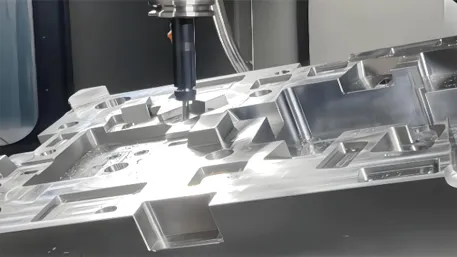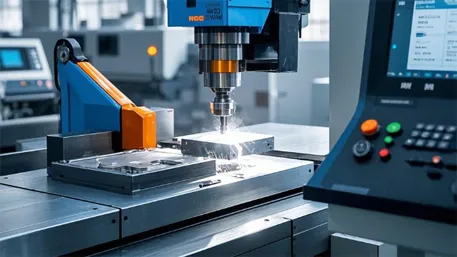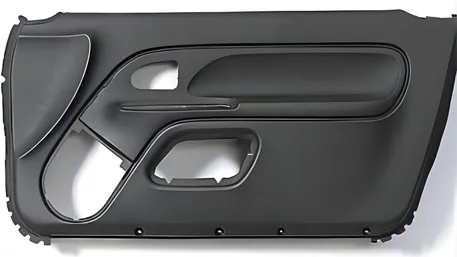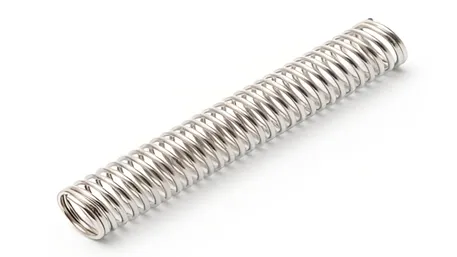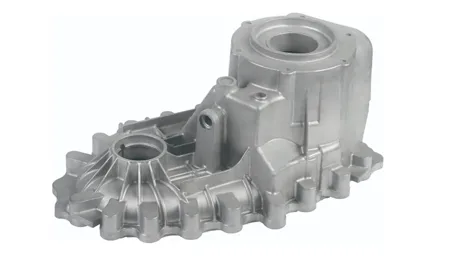In the packaging, electronics, automotive, and medical fields, PET (polyethylene terephthalate) has become a core material for customized plastic parts due to its excellent transparency, heat resistance, and environmental protection properties. This article systematically analyzes the technical logic of custom PET plastic parts, covering material characteristics, processing technologies, customization processes, and application scenarios, to provide professional solutions for high-end manufacturing.
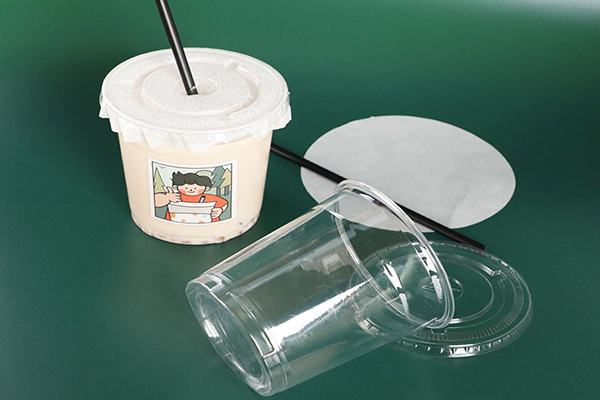
1. Material Characteristics: All-Around Material with High Performance and Environmental Friendliness
PET (Polyethylene Terephthalate), through molecular structure optimization and modification technologies, forms the general-purpose PET and modified PET systems. The core properties and application advantages are as follows:
1. Basic Properties and Modification Directions
Performance IndexGeneral-Purpose PETGlass Fiber Reinforced PET (GF-PET)Flame Retardant PET (UL94 V-0)Core AdvantagesApplication Value
Light Transmittance≥88%≥85%≥80%High transparency (comparable to glass) with excellent visual effectsTransparent packaging, optical lenses, display devices
Tensile Strength40 – 50 MPa80 – 100 MPa50 – 60 MPaGF-PET’s strength increases by 100%, suitable for load-bearing scenariosAutomotive structural parts, industrial machinery components
Heat Deflection Temperature85 – 120℃220 – 240℃110 – 130℃High heat resistance (long-term resistance up to 120℃, short-term up to 200℃)Home appliance parts, automotive engine peripheral components
Density1.38 – 1.40 g/cm³1.5 – 1.6 g/cm³1.42 g/cm³Moderate density, balancing strength and lightweightHigh-end parts sensitive to weight
Chemical ResistanceExcellent resistance to acids, alkalis, and oilsThe sameThe sameResistant to solvent erosion, meeting food contact safety requirementsPharmaceutical packaging, food and beverage containers
2. Modification Technologies to Expand Application Boundaries
Glass Fiber Reinforcement (GF-PET): After adding 30% glass fiber, the tensile strength increases to 90 MPa, and the coefficient of thermal expansion drops to 2.5×10⁻⁵/℃, suitable for load-bearing components such as high-precision gears and bearings.
Flame Retardant Modification: Using a halogen-free flame retardant compound technology, the flame retardant grade reaches UL94 V-0 (0.8mm thickness), and the smoke density ≤50, meeting the fire protection requirements of electronic device casings.
Weather Resistance Modification: Adding ultraviolet absorbers (such as UV-328), the light transmittance decreases by ≤5% after 1000 hours of outdoor aging, suitable for transparent covers of outdoor equipment.
2. Processing Technology: Technical Matrix of Precision Molding and Surface Treatment
1. Comparison of Core Molding Processes
ProcessPrecision (mm)Production Capacity (pieces/day)Applicable ScenariosTypical PartsKey Parameter Control
Injection Molding±0.035,000 – 20,000Precision parts and complex structuresElectronic connectors, optical lensesMaterial temperature 260 – 290℃, mold temperature 80 – 120℃, shrinkage rate 0.4% – 0.8%
Extrusion Molding±0.110,000+Sheets, pipes, profiled materialsPackaging sheets, infusion tubesScrew rotation speed 30 – 60rpm, traction speed 10 – 20m/min
Blow Molding±0.28,000 – 30,000Hollow containers, filmsBeverage bottles, cosmetic packaging bottlesBlow molding pressure 0.8 – 1.5MPa, cooling time 15 – 25 seconds
Thermoforming±0.315,000 – 30,000Thin-walled transparent packagingFood trays, electronic screen protectorsHeating temperature 180 – 220℃, forming pressure 0.6 – 1.2MPa
2. Surface Treatment and Functional Enhancement
Optical Coating:
Anti-reflective (AR) coating: Increases light transmittance to 95% and haze ≤1%, used for protective glass of mobile phone cameras to reduce light reflection loss.
Anti-fingerprint (AF) coating: The surface contact angle ≥110°, reducing fingerprint residue by 80%, suitable for transparent casings of high-end electronic devices.
Printing Processes:
Silk printing/pad printing: After corona treatment on the surface, the adhesion is doubled, passing the 3M tape test (peeling ≤3%), supporting high-precision graphic printing (precision ±0.1mm).
Composite Molding:
Two-color injection molding (PET + TPU): Forms a hard and brittle PET body and a flexible TPU edge in one step, such as mobile phone cases, with a 50% increase in drop resistance.
3. Customization Process: Full-Link Control for High-Precision Delivery
1. Requirement Diagnosis (1 – 2 working days)
Scenario Definition: Clearly define the part’s purpose (transparent structural part/functional part/aesthetic part), environmental conditions (temperature/humidity/chemical media), and precision level (IT7 level tolerance or free tolerance).
Material Adaptation: Provide material solutions within 1 working day. For example, choose general-purpose PET for high transparency (light transmittance ≥88%), and GF-PET for load-bearing (100% strength increase). Attach a cost comparison table (general-purpose PET $0.14 – $0.28 per piece, modified PET $0.35 – $0.70 per piece).
2. Design and Verification (5 – 7 working days)
Structural Optimization: Use Moldflow to simulate filling. For PET’s crystallization characteristics, design uniform wall thickness (recommended 1.0 – 3.0mm), and the spacing of reinforcing ribs ≤15mm to reduce warping, and control the deformation within 0.1mm/m.
Rapid Prototyping:
SLA stereolithography prototyping: Deliver transparent PET prototypes within 24 hours with a precision of ±0.1mm for preliminary optical performance verification.
Small-batch production with silicone molds (minimum order quantity of 100 pieces): Replicate PET’s heat resistance performance, supporting a non-deformation test at 120℃ for 24 hours.
3. Mass Production and Quality Inspection
Process Control:
Intelligent monitoring of injection molding machines: Temperature fluctuation ≤2℃, pressure fluctuation ≤3%, and the mold temperature machine precisely controls the mold temperature (error ±1℃) to ensure the uniformity of crystallinity (fluctuation ≤5%).
Extrusion production line: The online thickness gauge calibrates in real-time, and the sheet thickness uniformity error ≤2% to ensure the light transmittance consistency of optical parts.
Inspection System:
Inspection ItemStandard RequirementsEquipment/MethodQualification Index
Light TransmittanceGeneral-purpose PET ≥88%Haze meterPass rate 100%
Tensile StrengthGF-PET ≥80 MPaUniversal material testing machinePass rate 100%
Dimensional AccuracyCritical dimensions ±0.03mmCoordinate measuring machineCPK≥1.67
4. Application Scenarios: In-depth Penetration in High-End Manufacturing Fields
1. Packaging and Medical Fields
Food Packaging:
PET blister packs: Light transmittance ≥88%, water vapor transmission rate ≤5g/(m²・24h), certified by FDA 21 CFR 177.1630, suitable for fresh and baked food preservation packaging.
Medical trays: Halogen-free flame retardant PET (UL94 V-0), compliant with ISO 11607 medical packaging standards, with stable performance after gamma ray sterilization and impurity particles ≤5μm.
Medical Equipment: PET medical infusion bags: High transparency (light transmittance ≥90%), resistant to low temperatures of -40℃, extractable residue ≤0.1μg/mL, ensuring safe drug delivery.
2. Electronics and Optoelectronics
Optical Parts: PET optical diffuser sheets: Haze 60% – 80%, light diffusion uniformity ≥95%, used in LED lighting fixtures to reduce light spot unevenness to ≤3%.
Electronic Casings: Flame retardant PET electronic device casings, surface resistance 10⁹Ω, passing the non-deformation test at 70℃ for 24 hours, meeting 3C product fire protection certifications (CCC, UL).
3. Automotive Industry
Engine Components: GF-PET gears: Tensile strength 90 MPa, resistant to 150℃ high temperature and gear oil corrosion, noise ≤65dB, reducing weight by 50% compared with metal gears.
Interior Parts: Weather-resistant PET dashboard lenses, added with UV-531 absorber, with a light transmittance decrease of ≤8% after 5 years of outdoor use, in line with automotive industry weather resistance standards (GM 9506P).
4. Industrial and Consumer Goods
Industrial Accessories: Antistatic PET electronic trays, surface resistance 10⁸Ω, passing the ESD±15kV air discharge test to protect precision chips from electrostatic damage.
Consumer Goods: PET sports water bottles: Drop resistance increased by 30% (HIC test ≥2m drop without damage), compliant with LFGB food contact safety certification, suitable for outdoor scenarios.
5. Industry Trends and Technological Innovations
1. Environmental Protection and Sustainable Development
Recycled PET (rPET): Using a closed-loop recycling technology, the recycling rate of waste PET bottle chips ≥90%, and the performance retention rate ≥95%, compliant with the EU Extended Producer Responsibility (EPR) packaging law, suitable for recyclable packaging design.
Bio-based PET: Bio-based PET made from sugarcane bagasse, with a bio-based content of 30%, reduces carbon emissions by 20%, suitable for green consumer goods and high-end environmental protection packaging.
2. Breakthroughs in High-Performance Modification
High-Temperature Resistant PET: Liquid crystal polymer (LCP) modified PET, the heat deflection temperature is increased to 240℃, suitable for automotive engine sensor casings, with long-term resistance to engine oil corrosion.
Conductive PET: Carbon nanotube modified PET surface resistance ≤10⁶Ω, shielding effectiveness ≥50dB (1GHz), replacing metal for 5G device electromagnetic shielding covers, reducing weight by 70%.
3. Intelligent Manufacturing Upgrades
Digital Twin Molds: AI algorithms optimize the gate position, reducing the number of trial molds by 60%, shortening the mold development cycle to 18 days, and improving the dimensional accuracy of transparent parts to ±0.02mm.
Green Production Processes: Waterless cooling technology saves 80% of water, and the waste scrap recycling system utilization rate reaches 98%, compliant with the ISO 14001 environmental management system, achieving low-carbon manufacturing.
6. Frequently Asked Questions (FAQ)
Q1: What is the temperature resistance range of PET parts? A: General-purpose PET has a long-term temperature resistance of ≤120℃, GF-PET can reach 150℃, and special modified PET has a short-term temperature resistance of 200℃, meeting the needs of most industrial and consumer scenarios.
Q2: How to solve the impact of PET’s hygroscopicity on molding? A: Dry the raw materials before production (150℃, 4 hours), control the moisture content ≤0.02%, and use moisture-proof packaging (dew point ≤ -40℃) to reduce the risk of hydrolysis.
Q3: What certifications are required for food-grade PET? A: It needs to pass the FDA, EU EU 10/2011, and China GB 4806.7 certifications to ensure that the total migration amount ≤10mg/dm², suitable for direct food contact scenarios.
Q4: What is the minimum order quantity for small-batch customization? A: The minimum order quantity is 500 pieces. Using fast aluminum molds (development cycle of 7 days), the unit price is 20% higher than that of steel molds, suitable for sample testing (for example, the cost of 1,000 general-purpose PET parts is about $0.17 per piece).
7. Customer Testimonials
”Cooperating with the team to customize 10,000 GF-PET automotive gears, the delivery was completed in only 35 days. The product’s tensile strength reached 95 MPa, and it did not deform after a 24-hour test at 150℃. The noise was 10dB lower than that of metal gears. Through the optimization of glass fiber dispersion during production, the yield rate increased to 98%, fully meeting the lightweight and noise reduction requirements of new energy vehicles. The professional material selection and process control allowed us to obtain a disruptive solution in the transmission system project!” —— R & D Director of an automotive parts company
Customize Now and Unlock the Infinite Possibilities of PET Parts
Whether it is high-transparency packaging products, high-strength automotive components, or flame-retardant electronic casings, we take PET materials as the core and combine intelligent processes to provide a full-process service from demand diagnosis to mass production. Click to consult and get an exclusive solution, and make each PET part a benchmark for high performance and environmental protection!

